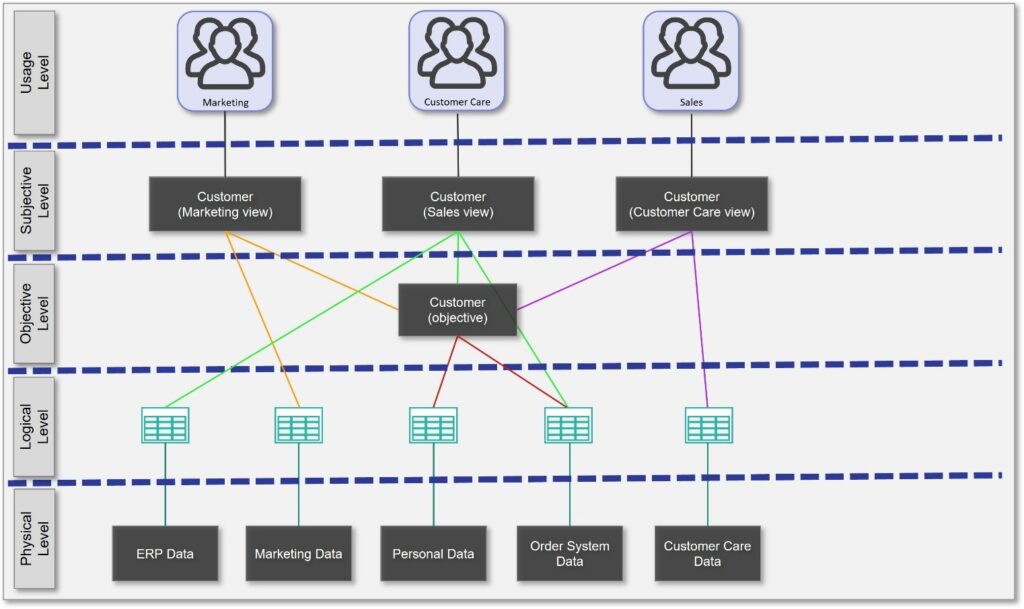
“If a lion could talk, we would not understand him.”
The above quote is from Ludwig Wittgenstein, in his Philosophical Research, and he says this because understanding is never a matter of language but of conceptualization – of how we categorize our world. This categorization is often implicit, in that the unsaid (also known as “common sense”) plays a fundamental role in understanding. This categorization therefore depends on our experience which, of course, is substantially different from that of lions.
Often, we take the unsaid for granted, or worse, we do not even perceive its existence. However, we understand each other by virtue of what we share implicitly; without this shared knowledge, what we say would be merely sounds, like the roar of the lion to our ears.
In our daily interactions, the unsaid often seems to be in the background, as something we all share without being aware of it, but in a business context, the unspoken becomes an element of danger, as it makes possible different interpretations of concepts that we believe are unambiguously clear. Even in our daily interactions, the unsaid has been the source of countless misunderstandings, or worse.
Beyond what Wittgenstein left us, in a deliberately extreme and provocative form, we must take note of the need to codify this implicit knowledge, which is the basis of subjectivity. Not doing so – or worse, not even trying – has the consequence of keeping the problem hidden, but this will not prevent it from sneakily manifesting itself during moments of confrontation, when these differences in interpretation will emerge overbearingly, forcing us to revise what we have taken for granted, with an impact on time and cost far greater than if we had taken this interpretive heterogeneity into account from the beginning.
Objectivity and Subjectivity
A systematic approach to solving this problem can only begin with the realization that objectivity and subjectivity are the yin and yang of meaning: The hope that everything can be made objective, at least within a specific organizational reality, is contrasted with the reality that what each of us is and does inevitably affects the meaning attributed to our surroundings.
In being who we are and doing what we do, we are constantly adapting to the context in which we grow up and live, as we perceive, introject, and ascribe meaning based on our experience, whether that connotes our private lives or our work lives.
What we need, then, is a point of connection between objectivity and subjectivity, because, especially in a work context, one cannot afford to think that this inevitable oscillation between the two will independently reach a point of equilibrium, nor, even if it does, that this point will be stable over time.
Though it might seem daunting, or ultimately impossible, to harmonize objectivity and subjectivity using logic, it is actually possible to achieve this using data.
The Semantic Layer as a Place of Harmonization
In the context of logical data management platforms, this junction point between objectivity and subjectivity is the semantic layer, a place not only for the representation of meaning but also for the decoupling between meaning and the technical characteristics of the data that support it. In this respect, semantic models comprise multiple levels, extending from the physical level to the usage level, as shown in the figure below. In a semantic model representing “customer,” for example, starting from the data sources, the logical level decouples these sources from their representation. “Customer” is then defined at the objective level, drawing on the logical level, and modeling it in such a way that its definition obtains cross-party consensus within the organization. Typically, the objective level would only draw attributes of a general nature from the physical layer, such as personal data or a list of the customer’s orders, which can be represented by a limited number of attributes. Further details are captured at the subjective level, where the different derivations of “customer” are modeled, starting from the objective level, so that they satisfy the needs of data consumers from different departments, such as Sales, Marketing, and Customer Care.
Semantic models, therefore, have to be guided not only by an observation of the world but also by a respect for the subjectivity expressed by those who work in the organization, because that is the fuel for innovation.
A Recommended Process
This harmonization between the objective and subjective domains within a semantic model can of course take place in different ways, but here I am arguing for the importance of ensuring it in general, rather than in a specific, algorithmic way. I recommend, as a first step, establishing a perimeter around those concepts that one assumes to be ontologically objective, in the sense that it is possible to give them a shared semantic definition that seems neither forced nor imposed, and agreed-upon by most of the relevant stakeholders in the organization.
After mapping out this objective level, it is then possible to derive and dignify the subjective component, which represents how the concepts defined at the objective level are interpreted by different groups of users according to their roles and responsibilities. This is summarized by the figure below, which illustrates real situations that are much more complex than can be faithfully represented here.

In the picture:
- The physical layer represents the typical data sources that might be integrated in the semantic modeling of “customer.”
- The logical layer is where the logical-physical separation of data sources, a foundational element of logical architectures, takes place.
- The objective level is where the “customer” concept is modeled so as to be considered objective within the organization. This normally involves defining “customer” solely by attributes that have a shared meaning among all structures in the organization.
- The subjective level represents the derivation, from the objective level, of data that captures the specific point of view of “customers” by different data consumers, depending on their role and their use of “customers” in relation to their goals.
- Finally, the usage level represents the different data consumers who use the data, typically using those defined according to their point of view that reasonably best fit what they need to do.
Of course, what I have described here using the customer example will take on different characteristics when representing different entities, such as citizens, points of sale, products, or production plants. Similarly, user groups will vary in actual practice.
Semantic Models and Innovation
Semantic models are extremely powerful for bringing ideas to life, as they make it possible to represent all of the inevitable but also desirable nuances of any real-world context, while at the same time providing equal dignity to the objective and subjective components. While it might seem tempting to strive for homogenized meaning, it is precisely in the different nuances that each person gives to the same concept, and the resulting comparison that ensues, that innovation finds nourishment.
- The Semantic Layer, Where Subjectivity and Objectivity Meet - July 23, 2025
- Unlocking Data Democracy: Denodo and the European Data Act - June 19, 2025
- Data Quality and Its Intensional and Extensional Components - June 12, 2025
